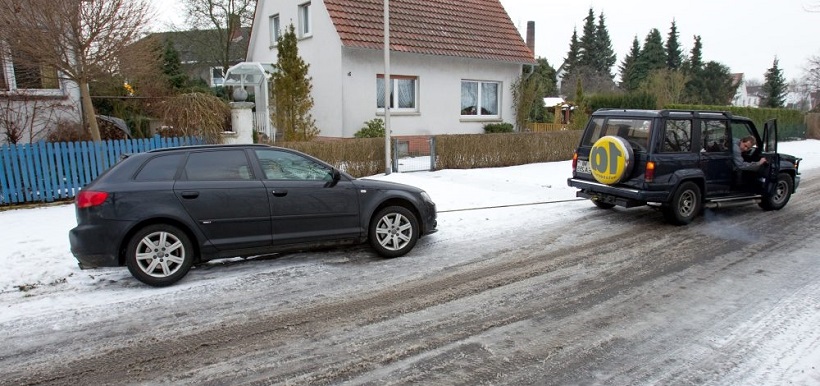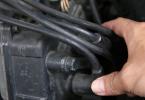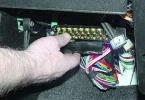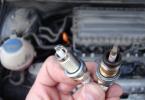Hello everyone again! I am always glad to have a dialogue with caring and inquisitive people who want to know more about the device and car maintenance. Today, every driver knows that there are different types of transmission - a manual transmission, where the driver needs to constantly press and an automatic transmission. In addition, varieties of automatic transmissions deserve special attention: CVTs, type-tronics, robotic boxes and some other design solutions. But in this review I want to focus specifically on what an automatic transmission is, how to use it and the specifics of its work.
A number of motorists from those who started driving back in the Soviet era, and faced only mechanics, still have concerns about automatic transmissions. Fortunately, there are fewer and fewer of them. And although no one says that automatic transmissions will replace manual transmissions in the near future, every year there are more and more of them on the roads. Using an automatic transmission correctly means increasing the efficiency of driving a car, and at the same time reducing the likelihood of breakdowns, because repairing an automatic transmission is very expensive.
The most convenient thing in operating a car equipped with such a device is that it is not necessary to manually select gears and switch them when a certain speed is reached. The system automatically selects the appropriate gear ratio, which is why the box was called "automatic". Women and novice drivers are especially passionate about it.
Basic modes and their purpose
So, a brief instruction on how to use the automatic transmission of Toyota Camry and other brands of foreign cars should begin with what modes exist, and why each of them is needed specifically:
- N (neutral position), provides for the operation of the motor in idle mode without movement. It is undesirable to turn on the machine while driving. The mode is used to warm up the engine or during long-term parking with a running power unit;
- P (Park position), in this position you can start the engine and remove the key from the ignition. The inclusion of this mode is allowed after the vehicle has completely stopped, and it is better if it is put on the parking brake;
- D (drive, movement), in this position the car starts to move as soon as the driver releases the brake pedal. This is the main driving mode, and most often the box is in this position while driving;
- R (reverse), moving the selector lever activates the movement of the car in reverse order, that is, backwards. To turn on the machine must come to a complete stop, and the brake pedal must be held depressed;
- D2, D3, these are modes for driving in low gears. They are useful when driving a car on descents and ascents, so as not to overload the transmission and engine. They can be effective in extreme driving conditions, such as ice and mountain slopes.
Some models of modern cars, such as Mazda, are also equipped with additional modes: E (economical), S (sport), and so on.
What can not be done on the automatic transmission
The driver of a car equipped with this type of gearbox, including the recently extremely popular Hyundai Solaris, must be familiar with the operating conditions of the automatic transmission and its technical nuances. First of all, do not allow too sharp jerks, accelerations or braking. During operation, this will inevitably lead to an increase in the gap between the frictions, and this will consist in shocks during the inclusion of speeds. When changing from forward to reverse, it is best to let the gearbox rest for a few seconds. During this time, the engine speed will drop to idle.
Partial slip is prohibited. This situation occurs when the car is stuck in mud or on an icy road. Unlike mechanics, where drivers alternately turn on the forward and reverse speeds, achieving the buildup effect, the machine does not tolerate such interference. Neglect of these recommendations leads to overheating of the gearbox and its failure with, as already mentioned, costly repairs. It is best in such situations to ask someone to push the car with their hands. 
So, how to use an automatic transmission on a Kia Ria or any other car while driving. The engine is running, the brake pedal is clamped by the driver's foot. We translate the handle from the parking position to position D (forward movement). We release the brake and observe how the car smoothly moves off. To accelerate, we throw our foot on the gas pedal, and as we pick up speed, the box itself will increase gears. The same thing happens when decelerating, just in reverse. You will not have to take any additional actions - you just need to follow the road and adjust the direction of movement with the steering wheel, if necessary, braking with the brake.
If we drive a car in a metropolis, we often drive long distances in one operating mode - D (movement). By alternately pressing the accelerator and brake pedals, the speed is adjusted, and the mode and position of the lever remain the same. There are also so-called sub-modes that are appropriate to use on non-standard road surfaces.
For example, a position called D3 implies that it will not engage above 3rd gear. This limitation makes sense when driving on long descents and ascents with a moderate slope angle. Sometimes it makes sense to turn on this mode for fast overtaking outside the city, since high vehicle dynamics is achieved. Usually the speed limit is limited to 130-140 kilometers per hour and the driver must control that the tachometer needle does not reach the red zone.
Exactly the same gear changes work for modes "2" and "1". As you may have guessed, in these cases the car does not move at a speed higher than the second and first, respectively. Such modes are used in particularly difficult road or climatic conditions: steep slopes and descents, slippery slopes, slush and off-road driving.



